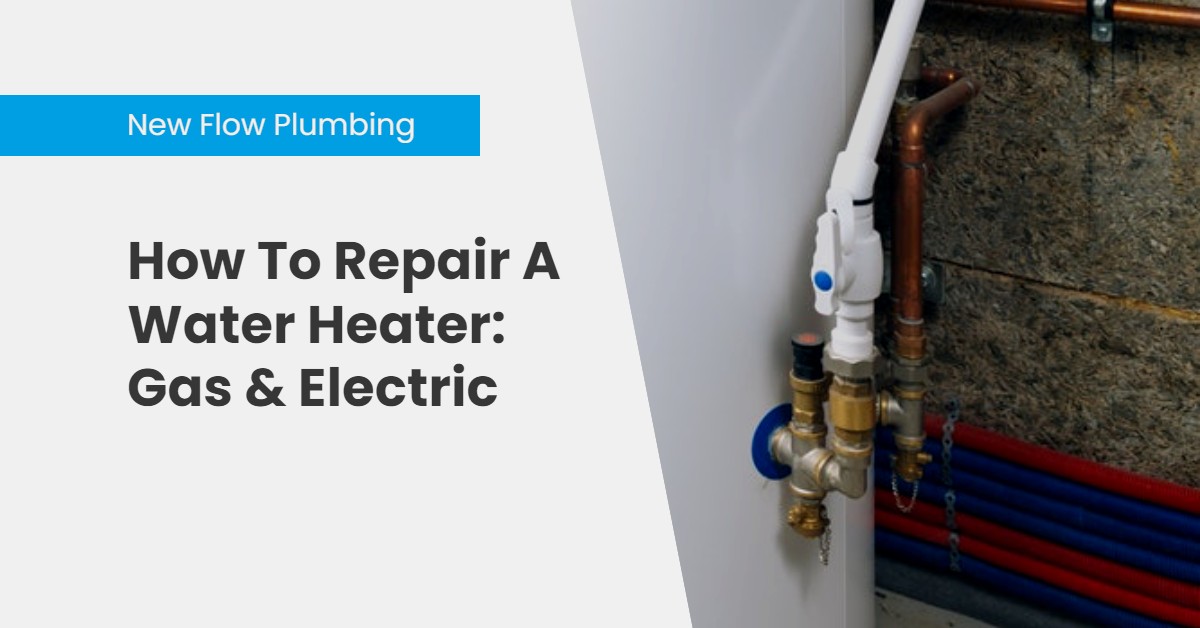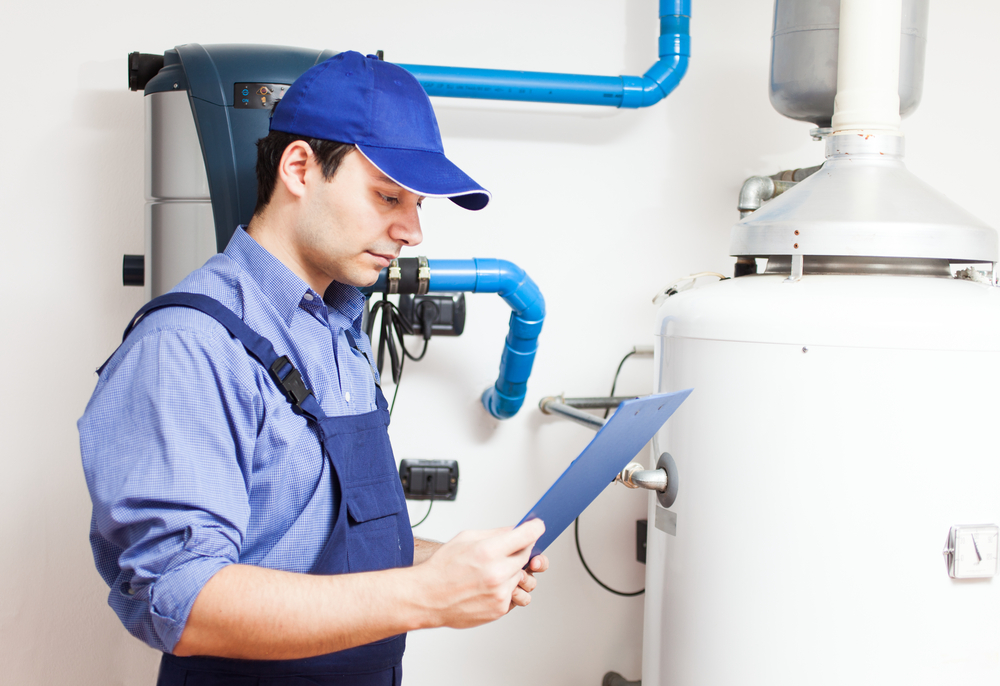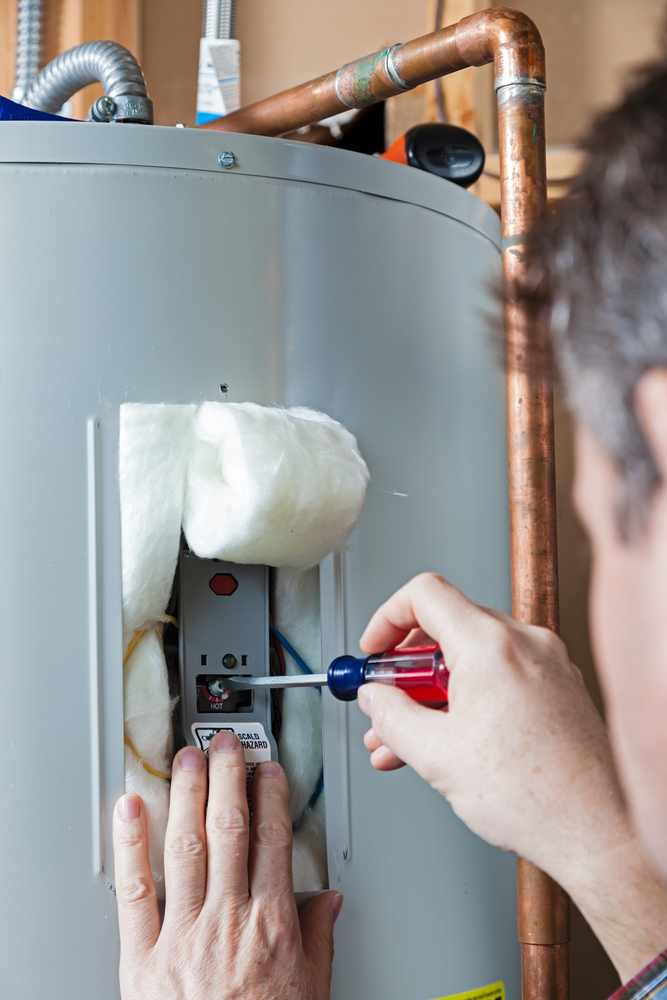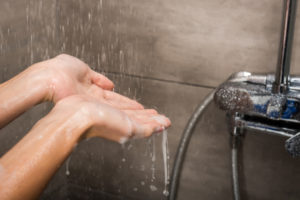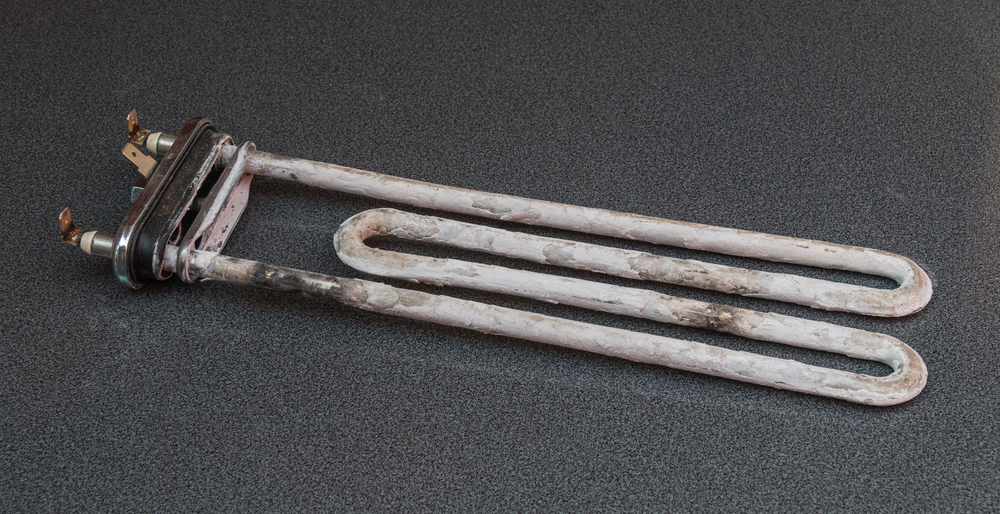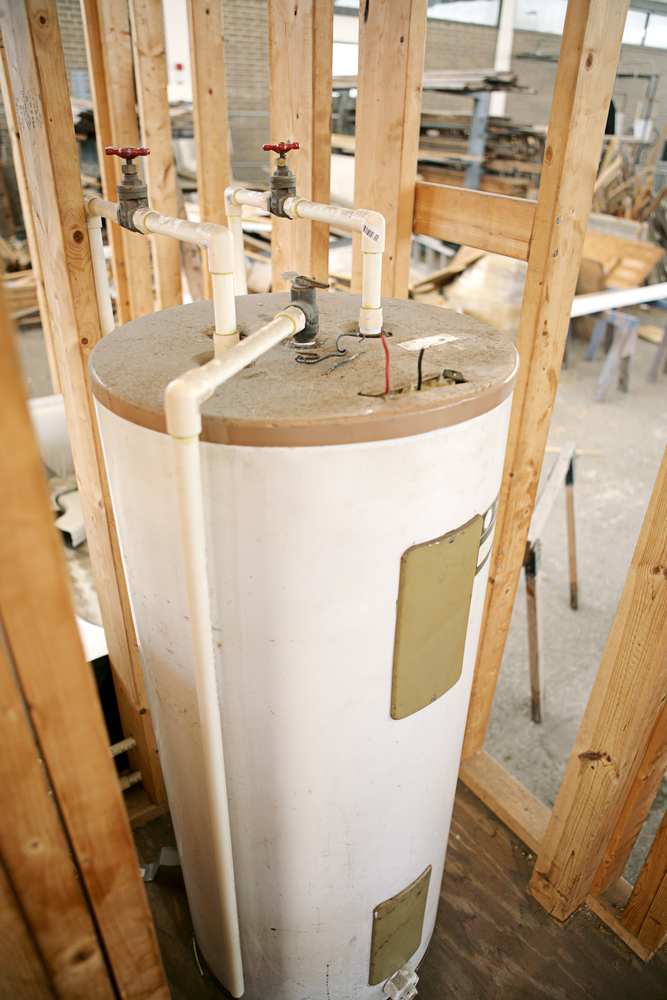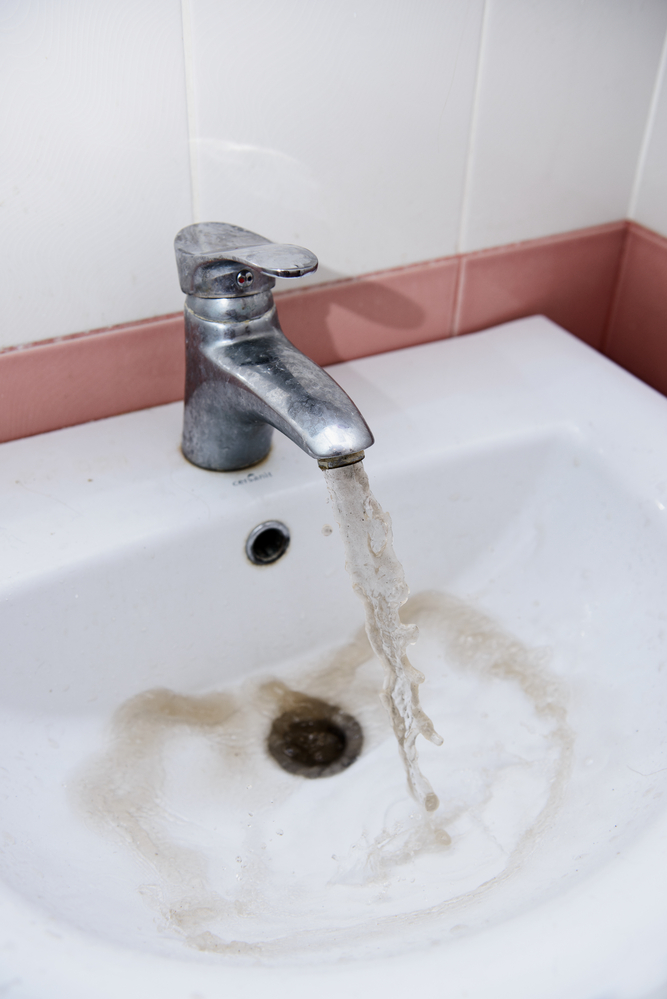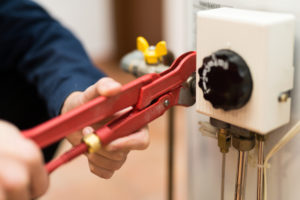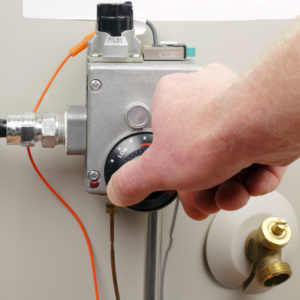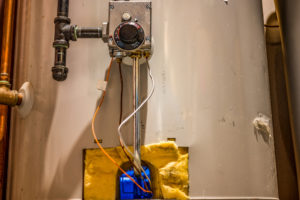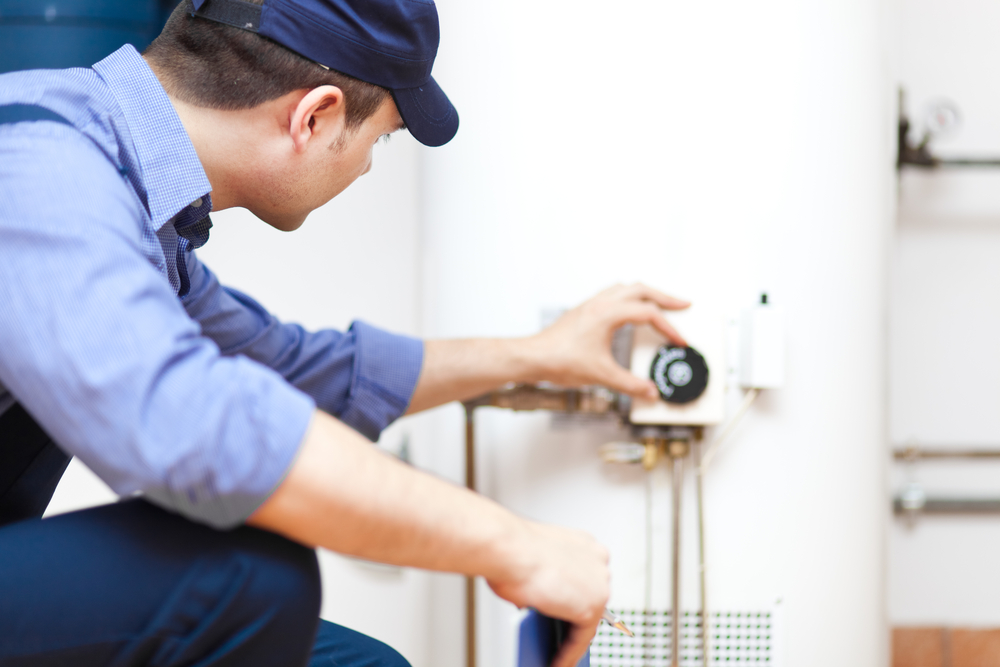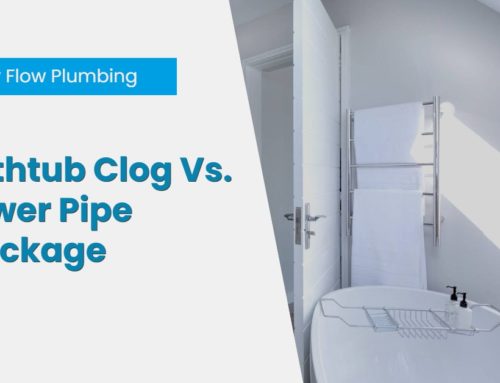How To Repair A Water Heater: Gas & Electric
Your water heater is an important part of your home. Do you know what to do if it needs repairs? If you have a gas or electric water heater, you're in the right place! Here you'll find different ways your water heater could fail and the best repair options available. We let you know which of these solutions require professional help.
What Type Of What Heater Do You Have?
The main difference between electric and gas water heaters is how the water is heated. Electric heaters have upper and lower heating elements that extend into the water tank. Gas heaters have a gas burner that heats the water from below the tank.
How To Repair An Electric Water Heater
Working on an electric water heater can be dangerous because you're dealing with volts, amps, and water, a possible deadly combination. Call a professional water heater service company if you don't feel comfortable handling any of these methods yourself.
Problem: No Hot Water
A water heater that won't produce hot water may not be getting power, have a tripped limit switch, or have one or more failed heating elements.
Solution #1 Circuit Breaker
First, check if the water heater's circuit breaker in your service panel has tripped. A tripped breaker looks as if it's stuck in the middle of on and off. If the breaker tripped, switch it off and on again.
Solution #2 Reset The Heater
If the breaker in your service panel did not trip, try to reset the high-temperature limit on the heater.
- Shut off the power to the water heater from your service panel. You don't want to be working with live power.
- Remove the access panel on the upper heating element on your water heater.
- Remove any insulation or plastic safety guards. Even if the power is off, do not touch any wires or electrical terminals.
- Press the red, sometimes black, reset button also called the ECO (emergency cut off).
- Replace the safety guard, insulation, and access panel.
- Return to your service panel and switch the power back on.
If this solution doesn't work, there could be a fault with the heating elements inside the tank. We recommend calling a professional at this point. Another possible reasons you're not getting hot water is because you have a broken water pipe.
Problem: Inadequate Hot Water
If you don't have enough hot water in your home, it could mean your water heater is too small to handle your home's demand. Water heaters should have 75 percent of their capacity as hot water. For example, a 40-gallon water heater is sized for a demand of 30-gallons of hot water.
Solution #1 Water Conservation
Unless you buy a larger water heater with a higher capacity, here are a few steps you can take to limit your hot water intake.
- Limit the length of your showers.
- Install low-flow showerheads - There are two types of "low-flow" heads available. Non-aerating ones work by restricting the water flow and squeezing it through tiny holes; this produces a hard, massaging water spray. "Aerating" heads mix oxygen with the water to create a softer, bubbly shower.
- Spread out dishwashing and laundry to different times of the day.
Solution #2 Heating Elements
If your unit is not oversized and starts putting out less hot water than usual, one or both of its heating elements may have failed. Here's how you can tell how each element failed.
Upper heating element - If you notice a constant supply of lukewarm water, the upper heating element failed.
Lower heating element - If you notice that hot water runs out quickly while you shower, the problem is the lower heating element.
If you have defective heating elements, you should call a professional to replace them. They might even suggest replacing the entire tank itself.
Problem: Water Temperature Is Too Hot
If the water in your showers is unbearably hot, one or both of your water heater's thermostats may be set too high.
Solution
For this solution, you will want to have a no-contact voltage tester, which you can buy online or at your local utility store.
Problem: Water Leaks
If your water tank is leaking, you risk water damage, mold, mildew, and all other sorts of problems if you don't find and fix the issue.
Solution #1 Water Supply Lines
Water supply lines are made of either rigid pipe connections or flexible supply tubes. Here are the steps you should take before replacing a faulty line.
- First, turn off the power to the water heater from your service panel.
- Next, you want to turn off the water to the heater. There should be a shutoff valve on the cold water pipe leading to the tank.
- Use one of your sink's hot water nozzle to test if the hot water is off.
- Once the tank is no longer receiving water, you can replace the leaking or faulty supply line.
Solution #2 Water Heater Nipples
Water heater nipples connect to the cold water inlet pipe and the hot water exit pipe. The thinnest part of the nipples have small threads that are prone to leaks. If you've already replaced the water supply lines, the nipples are the next likely cause.
Removing the water heater nipples requires a pipe wrench and some leverage. We recommend calling a professional for this solution. You don't want to break the nipples or any other part of the tank.
Solution #3 Temperature & Pressure Release Valve
The temperature & pressure release valve (T&P) is usually located on the side of the tank. It won't typically leak unless there is a bigger problem in the tank.
- If the valve was removed recently, it's possible the seal is not tight enough. You can either tighten the valve or reinstall it with new plumbers tape wrapped around the threads.
- If your water heater is overheating the water, the excessive pressure may be causing the valve to leak. You can either lower the water temperature or install a water expansion tank. A water heater expansion tank is a safety device that protects pipes and fixtures fitted with a pressure-limiting valve or a back-flow preventer.
If these solutions don't work, we suggest calling a professional to replace the valve.
Solution #4 The Drain Line
The drain line allows you to drain out your water tank. If you've just emptied your water tank, the valve could have failed to close completely.
- You can cap the drain line with a hose cap, which you can buy at your local utility store or online.
- If you want to replace the line, you need to shut off the hot water and drain the tank.
Problem: Rust-Colored Water Or Bad Odor
If you notice brown water coming out of your sinks, showers, or tubs, your water heater could be corroding. If your water smells like rotten eggs, bacteria could be growing in the tank.
Solution
You might need to replace the anode rod in the tank. The purpose of an anode rod is to attract sediment and corrosive elements. The minerals in the water corrode the anode rod rather than the inside of your tank. This solution requires professional help. You don't want to start breaking anything open.
Problem: Tank Making Noises
If you hear rumbling, popping noises, or a high-pitched whine, you could be hearing water boiling inside your tank.
Solution
Excessive buildup of sediment in the bottom of the tank can cause your water heater to overheat, resulting in boiling water. The first thing you want to try is draining the tank, and if that doesn't solve the problem, we suggest replacing the faulty tank.
How To Repair A Gas Water Heater
When repairing a gas water heater, you are dealing with hot water and dangerous gas. Before you try any of these repair solutions, turn off the gas to your heater. Once that's done, let's begin.
Problem: No Hot Water
Your gas water heater is heated by a burner and pilot light. Before you get started, check to see if other appliances in your home are still receiving gas, such as your oven and stove.
Solution #1 No Gas
Check your gas shutoff valves around your home. There are three possible locations where you can find them. You want to make sure all of them are on.
Streetside valve - Your main shut-off valve is located just before the gas meter outside your home.
House side valve - Inside your home, where your gas pipe enters your wall, you can find your house side valve. The gas line is usually made of black iron pipe. Don't confuse it with your gray galvanized water pipe.
High-pressure systems - If you have a newer home, look for a flexible copper pipe and shutoff valve closer to your water heater or furnace.
Solution #2 The Pilot Light
If your gas is on, but your pilot light is still off, you may have to turn it on manually.
- Locate the pilot light on the water heater. Use a screwdriver to remove the access panel.
- Find the gas regulator valve and turn it to the "off" position. Wait 5 to 10 minutes for any residual gas to clear out.
- Turn the temperature control valve to the lowest setting. Turn the gas regulator valve to the "pilot" position.
- If the water heater has a manual "ignite" button, press that to light the pilot.
- If it doesn't have a button, or the button fails, press the regulator valve and hold a grill lighter or long match to the pilot light valve until the pilot ignites. Hold the button down for up to a minute to ensure that the light stays lit.
- Turn the gas regulator valve to the "on" position.
- Turn the temperature valve to its desired setting.
- Close the access panel.
Solution #3 Pilot Light Doesn't Stay Lit
If your pilot light doesn't stay lit, it could be because of a faulty thermocouple. A thermocouple or flame sensor is a device used to control the gas flow into your tank. Replacing a thermocouple involves lots of moving parts. So, we suggest calling in a professional to handle the repair.
Problem: Not Enough Hot Water
Here are a few reasons why you're not getting enough hot water.
- You don't have the thermostat set at a high enough temperature, especially in the winter months.
- A faulty thermostat can display the wrong temperature, or it could be unable to change the temperature.
- You have a broken or damaged dip tube.
- Your water tank is too small for your needs.
Solution #1 Thermostat
If you have a defective thermostat, the entire gas valve will have to be replaced.
Solution #2 Dip Tube
The role of the dip tube is to direct incoming cold replacement water to the bottom of the tank for heating. While it warms, the dense, cold water stays naturally separated from the warmer, lighter water floating on top. The water for faucets and appliances comes from the hot layer on top.
If the dip tube is missing or broken, the cold incoming water mixes with the hot water at the top of the tank, and you wind up feeding the house with cold instead of hot water. You can easily replace the dip tube with a new part from your local store or online.
Solution #3 Water Conservation
Unless you buy a larger water heater with a higher capacity, here are a few steps you can take to limit your hot water intake.
- Limit the length of your showers.
- Install low-flow showerheads - There are two types of "low-flow" heads available. Non-aerating ones work by restricting the water flow and squeezing it through very small holes, producing a hard, massaging water spray. "Aerating" heads, meanwhile, mix oxygen with the water to create a softer, bubbly shower.
- Spread out dishwashing and laundry to different times of the day.
Problem: Water Is Too Hot
If your water is too hot, it can be unbearable to shower, wash your hands, or take a bath.
Solution: Thermostat
Most likely, your thermostat is set too high. This is most common when transitioning to the warmer Spring and Summer months and forgetting to set back the temperature after raising it during the Winter. You could also have a faulty thermostat.
Problem: Water Takes Too Long To Heat
If you notice your hot water takes too long to heat, it could be due to various reasons.
- The thermostat is set too low.
- The burner orifice may be too dirty or clogged.
- The gas pressure may be too low.
- The vent flue may be too dirty.
Solution #1 Raise The Temperature
If your water heater thermostat is set too low, all you have to do is raise it. The Environmental Protection Agency recommends you set your water heater temperature to 120 degrees Fahrenheit.
Solution #2 Burner Orifice
Your burner orifice is where your pilot light sits.
- Remove the cover plate at the bottom of the water heater. You won't need any tools; lift it to unsnap it.
- Turn the gas control to the "Off" position. Follow the gas line from the heater to the gas supply shutoff valve and turn off the valve. The valve is off when it's perpendicular to the pipe.
- Locate the pilot tube. It is one of two small tubes connected to the automatic gas valve; the other is the thermocouple tube. Disconnect the bracket holding both tubes to the gas valve using a screwdriver. Pull out the bracket.
- Clean the pilot hole by brushing it with a stiff wire brush. Alternatively, poke a thin wire into the orifice.
- Screw the bracket back onto the valve and turn on the gas. Start the pilot by turning the control knob to the "Pilot" position. Hold it in while you light the pilot with a match or the piezoelectric control on the heater. Let the pilot burn for 20 seconds or so before releasing the knob. If the pilot stays on, turn the knob to the "On" position.
Solution #2 Gas Pressure
- Locate the ball valve along the gas line that feeds into your water heater. The gas line is usually colored yellow, and the ball valve will likely be red or blue.
- If the valve is turned to the "On" position, there is nothing more you can do to adjust the gas pressure. If the valve is not turned all the way on, but hot water is being produced, turn the valve all the way to the "On" position.
- If the valve is partially in the "On" position, but there is no hot water, turn the valve to the "Off" position and wait five minutes.
- Turn the valve to the "On" position, then turn the gas valve on the water heater to the "Pilot" position. Press down on the "Ignition" button until you see the pilot flame inside the heater. Turn the gas valve to the "Run" or "On" position. The gas is now fully on.
Solution #3 Vent Flue
All water heater venting systems use a vent duct or pipe—also called a chimney or flue—to bring exhaust gases from the water heater to the outdoors. We recommend calling in professionals to help clean or replace the vent flue.
Problem: Rust-Colored Water Or Bad Odor
Just like electric water heaters, they can fail, producing dirty or smelly water.
Solution
You might need to replace the anode rod in the tank. The purpose of an anode rod is to attract sediment and corrosive elements. The minerals in the water corrode the anode rod rather than the inside of your tank. This solution requires professional help since the rod is located inside the tank. You don't want to start breaking anything open.
Problem: Tank Making Noises
Just like electric water heaters, if you hear noises inside your tank, it could come from excessive sediment buildup.
Solution
The first thing you want to try is draining the tank, and if that doesn't solve the problem, we suggest replacing the faulty tank.
Who Are The Professionals?
If you live in the Greater Los Angeles area, call New Flow Plumbing! We can inspect your water heater, locate the issue, and find the best solution for you. We also provide sewer and plumbing repair, CCTV camera inspections, and more. Give us a call today and ask for any current specials.

